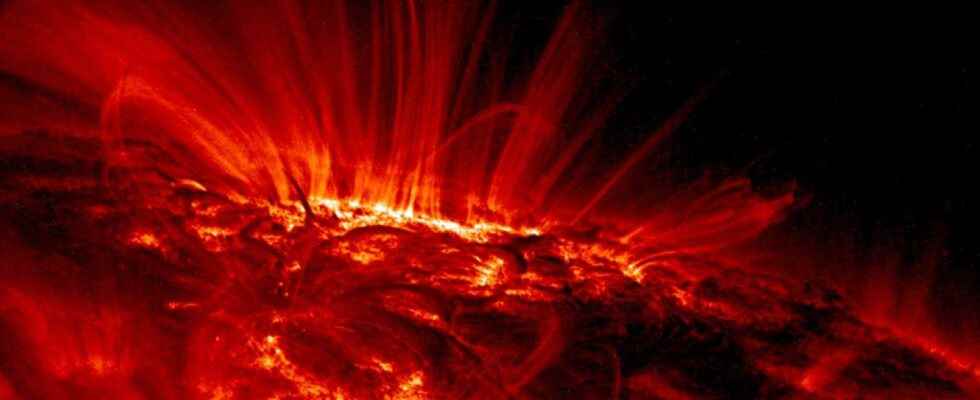The detection of dark matter has proven more difficult than expected, but astroparticle physicists still rely on natural giant detectors, the stars, to compensate for the weakness of terrestrial detectors. A particular signature of dark matter in the form of asteroid-mass objects could betray its presence by colliding with star populations.
If we do not modify the laws of celestial mechanics deduced from Newton’s theoryor better from the general relativity ofEinsteinwe must postulate the existence of additional masses which cannot be in the form of the particles composing our body and the stars of the planet. Solar system if we want to account for movements stars and clouds ofhydrogen in the galaxies, and simply report on the existence of galaxies. This mass also cannot be in the form of charged particles, or very weaklybecause we do not observe any radiation associated with this matter, which is therefore called black.
We had very good reasons to believe that we would discover the particles of black matter directly or indirectly well before 2020. But this has not been the case despite vigorous research with detectors like AMS, Xenon 1T or those of LHC, Atlas and CMS.
We therefore consider more and more hypotheses exotic and we seek to further constrain the space of parameters determining the characteristics that can be possessed by dark matter. Among these characteristics, there is the size of the packages of mass behaving like dark matter, for example the size of black holes primordial or clumps of strange matter left by the big Bang.
To fix the ideas, let us take this last case, i.e. packets of quarks that we call strangelets or nuggets of quarks. One can for example try to detect them by gravitational microlensing effects, that is to say a transient amplification of the light of a star in front of which this type of object would pass. We also tried to do this with primordial black mini-holeswithout success, which again set limits on the size and possible contributions of these objects to the constitution of dark matter.
Galex and ultraviolet astronomy. To obtain a fairly accurate French translation, click on the white rectangle at the bottom right. The English subtitles should then appear. Then click on the nut to the right of the rectangle, then on “Subtitles” and finally on “Translate automatically”. Choose “French”. © ScienceMagazine
An indirect ultraviolet signature of dark matter
He remains in fact among the Windows observations which are not blocked, objects whose size, or more precisely the mass, would be of the order of that of a asteroid. A group of researchers from SLAC National Accelerator Laboratory and the University of Paris-Saclay had an ingenious idea to try to detect them by modeling the effect of the collisions of these concentrations of dark matter with stars – these physicists explain in an article published in Physical Review Letterscorn free access on arXiv.
At first, researchers expected these collisions to cause some star explosions in supernovaebut calculations showed that this must not be the case at least for ordinary stars.
However, these calculations also revealed that during these collisions, and although dark matter does not interact or very little with ordinary matter except by the force of gravitation, powerful supersonic shock waves were to occur and propagate through the stars. In the end, they could create on their surface hot spots particularly brilliant in the field of rays ultraviolet temporarily, and with a very characteristic signature.
The astrophysicists have been doing ultraviolet astronomy in space for decades. The far ultraviolet camera (UVC) was one of the experiments deployed on the lunar surface by the astronauts ofApollo 16 in 1972. One can also cite as an example in this respect the mission Galaxy Evolution Explorer (Galex) of NASA which took place from 2003 to 2013 and before it that of telescope spatial Fuse, an acronym in English for Far Ultraviolet Spectroscopic Explorer (Far Ultraviolet Spectroscopic Explorer).
The new signature of dark matter proposed by the researchers could, according to them, be within reach ofultrasatan Israeli mission that should be on orbit by 2024 and which is specially dedicated to ultraviolet astronomy.
Whatever the mission which would take care of detecting this signature in the future, it would be necessary to monitor a large number of stars and therefore a large portion of the celestial vault to have a chance of surprising these collisions which do not produce emissions UV only very transiently.
Ideally, the telescope Hubble could already do the trick if he were watching a globular cluster because the density of stars is important there for a small region of the sky.
Interested in what you just read?
